31 Must Have Woodworking Tools You Should Try
Working with wood is hard when you don’t have the right tools. I learned this the tough way when I first started making things in my small workshop. Many beginners feel lost about which tools they really need.
I spent five years testing different woodworking tools, and now I can help you pick the ones that matter.
In this guide, I’ll show you 31 essential tools that will make your woodworking projects easier and more fun.
You’ll learn which basic tools you need to start, how each one helps, and smart tips about using them.
Let’s build a solid toolkit that works for both new and skilled woodworkers.
What are Woodworking Tools & It’s Benefits
These are special tools made to help you shape, cut, join, and finish wood pieces. From my experience, each tool serves a specific purpose in turning raw wood into something useful and beautiful.
Here’s what makes woodworking tools worth your time and money:
- Better Control and Accuracy: I’ve found that proper tools give you exact cuts and smooth finishes. When I use the right tool, my projects turn out just how I want them. Think of it like having a sharp pencil instead of a dull one – the results are better.
- Time-Saving Solutions: Good tools help you work faster. I remember when I tried making dados by hand – it took forever! With the right dado blade, I can do the same job in minutes.
- Safety First: Using the right tools keeps you safe. I always tell my friends that forcing the wrong tool to do a job is asking for trouble. Proper tools reduce the risk of accidents and injuries.
- Clean Results: Each tool is made for specific tasks. The results look professional when I use a tool for its intended job. Hand saws for straight cuts and chisels for clean corners all add to better-looking projects.
- Money-Saving in the Long Run: Quality tools cost more upfront but save money over time. I’ve learned that good tools last longer, cut materials cleanly (less waste), help avoid costly mistakes, and reduce the need for repairs.
- Wider Project Options: Having the right tools opens up new possibilities. With basic tools, I could only make simple boxes. Now, with more specialized tools, I can create detailed furniture pieces.
- Less Physical Strain: Good tools make work easier on your body. Using tools designed for each task means less pushing, pulling, and straining.
List of Must-Have Hard Tools to Check Out
1. Chisels (Price Range – $20-$100 for a set)

Sharp hand tools that I use to cut and shape wood with precision. They’re one of the first tools I bought when starting woodworking.
| Used For | Benefits | Sizes & Types |
|---|---|---|
| Making joints and grooves | Perfect for detailed work | Bench chisels (¼” to 2″) |
| Cleaning up mortises | High accuracy in tight spots | Mortise chisels |
| Carving details in wood | Long-lasting when well-maintained | Paring chisels |
| Trimming wood plugs | Works well with any wood type | Socket or tang handle types |
2. Hand plane (Price Range – $30-$150)

A tool I rely on to smooth wood surfaces and level board edges. It gives better control than power tools for fine adjustments.
| Used For | Benefits | Sizes & Types |
|---|---|---|
| Smoothing rough wood | Better surface finish | Block plane |
| Leveling surfaces | No electricity needed | Jack plane |
| Making boards thinner | More control over wood removal | Smoothing plane |
| Creating flat edges | Quiet operation | Jointer plane |
3. Measuring tape (Price Range – $5-$25)
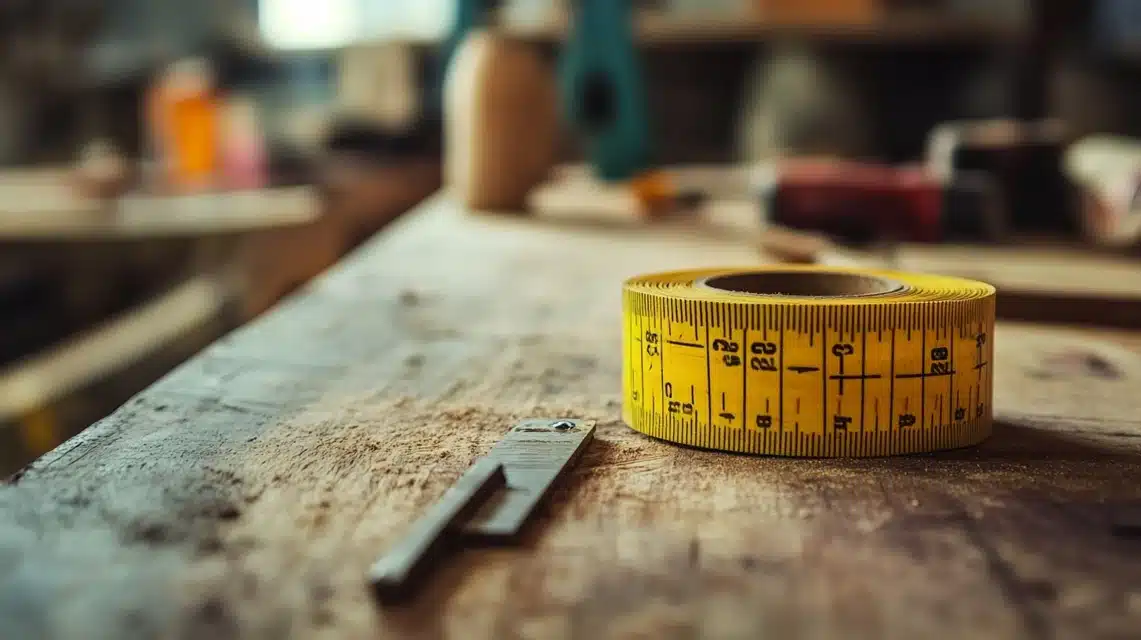
A flexible ruler I use daily. It’s essential for getting exact measurements and marking cut lines.
| Used For | Benefits | Sizes & Types |
|---|---|---|
| Taking measurements | Quick measurements | 12-foot tape |
| Marking cut lines | Easy to carry | 25-foot tape |
| Checking dimensions | Retracts automatically | 35-foot tape |
| Layout work | Works for curved surfaces | Metric or imperial units |
4. Carpenter’s square (Price Range – $10-$40)

A flat, L-shaped tool I use to check right angles and mark straight lines.
| Used For | Benefits | Sizes & Types |
|---|---|---|
| Checking 90-degree angles | Ensures corners are square | 12-inch speed square |
| Making straight lines | Works as a straight-edge | 16-inch framing square |
| Square marking | Helps in layout work | 24-inch framing square |
| Measuring depth | Simple to use | Combination square |
5. Level (Price Range – $15-$60)
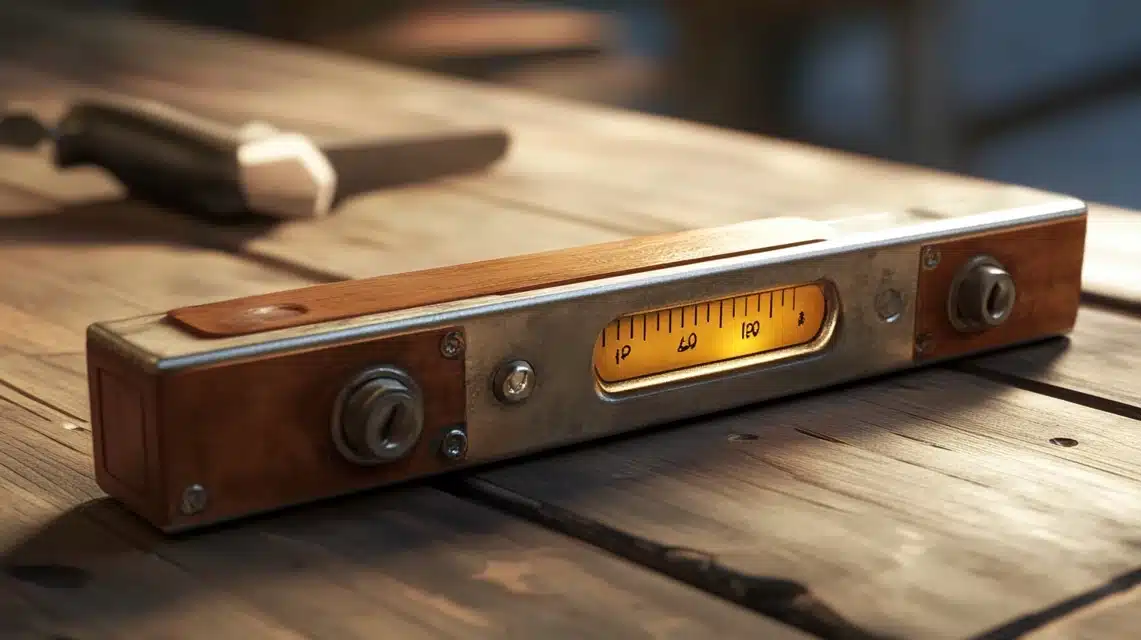
A tool I trust to make sure surfaces are perfectly flat. It’s key for any project that needs to be straight.
| Used For | Benefits | Sizes & Types |
|---|---|---|
| Checking horizontal surfaces | Ensures flat surfaces | 9-inch torpedo level |
| Verifying vertical alignment | Prevents wobbling | 24-inch level |
| Setting up machinery | Easy to read | 48-inch level |
| Installing cabinets | Multiple measuring points | Digital levels |
6. Hand saw (Price Range – $15-$75)
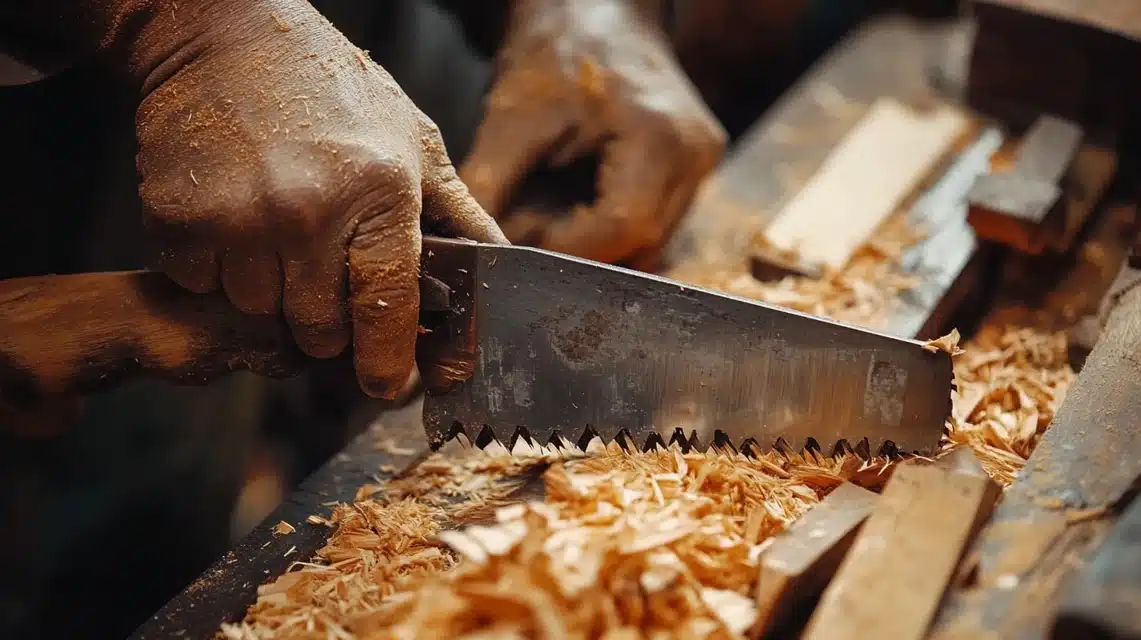
My go-to manual cutting tool. It gives me great control when making straight cuts in wood.
| Used For | Benefits | Sizes & Types |
|---|---|---|
| Straight cuts in wood | No power needed | Rip saw |
| Cross cuts and rip cuts | Precise control | Cross cut saw |
| Small project cuts | Easy to maintain | Back saw |
| Detail work | Works anywhere | Panel saw |
7. Claw hammer (Price Range – $10-$50)
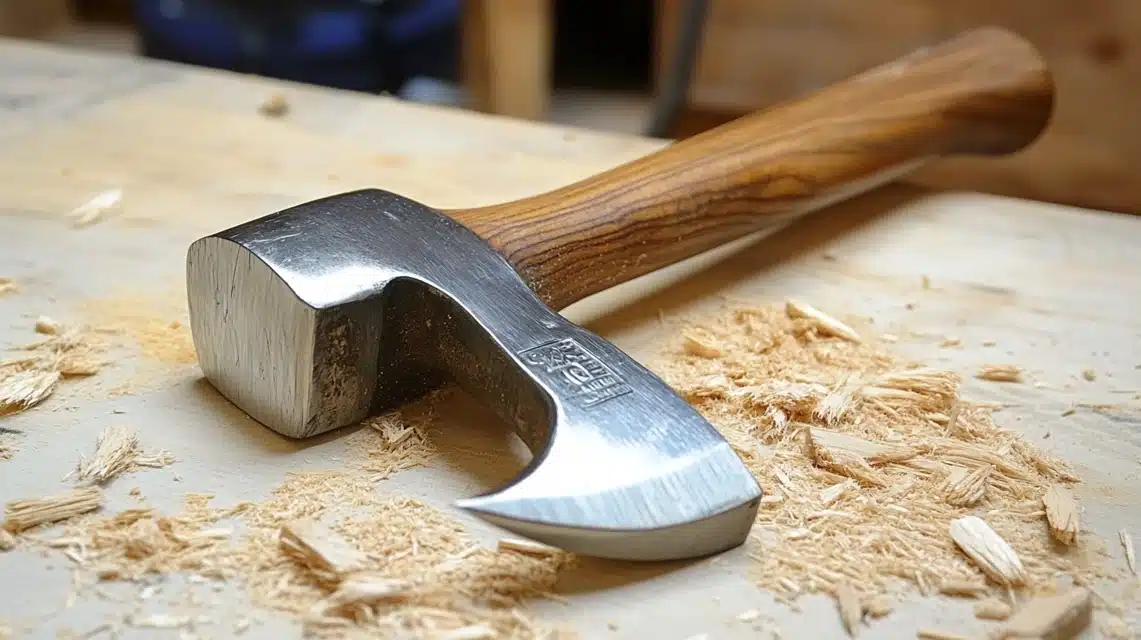
A basic but vital tool I use every day. Perfect for driving nails and pulling them out.
| Used For | Benefits | Sizes & Types |
|---|---|---|
| Driving nails | Two tools in one | 16 oz general use |
| Removing nails | Strong, striking power | 20 oz framing |
| Light assembly | Good grip | Wood handle |
| Adjusting wood positions | Long-lasting | Steel handle |
8. Screwdrivers set (Price Range – $20-$80)
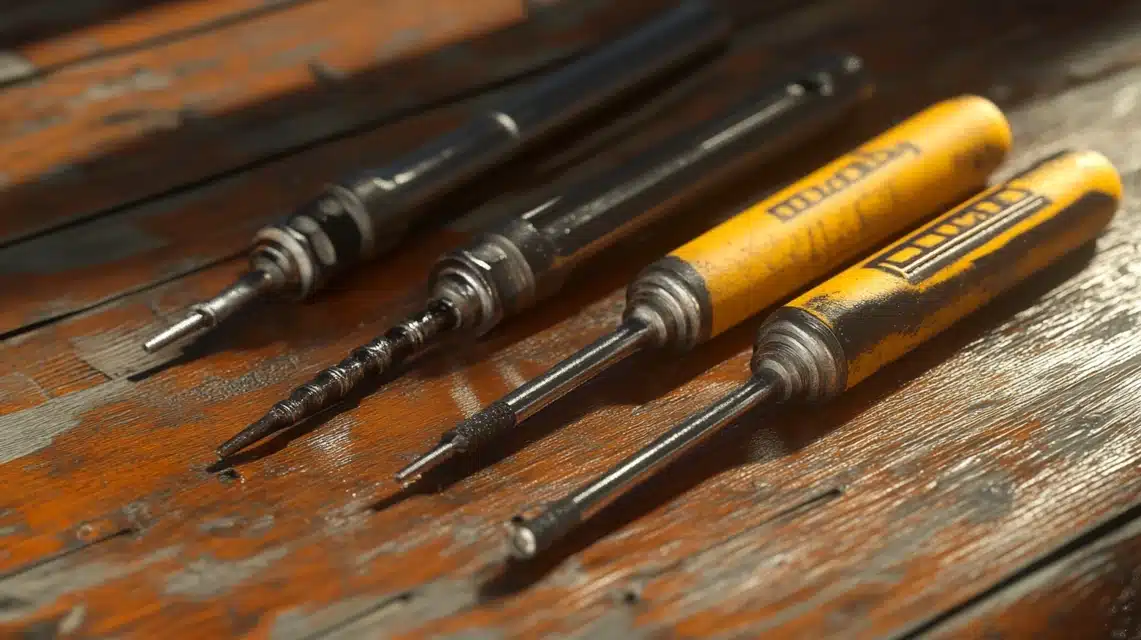
Essential hand tools I use for all types of screws and small adjustments.
| Used For | Benefits | Sizes & Types |
|---|---|---|
| Driving screws | Fits many screw types | Phillips head |
| Removing screws | Good control | Flathead |
| Making adjustments | Long lasting | Square drive |
| Basic assembly | Easy to store | Torx drive |
9. Wood rasps (Price Range – $15-$60)

Coarse files I use to shape wood quickly and roughly.
| Used For | Benefits | Sizes & Types |
|---|---|---|
| Rough shaping | Fast wood removal | Half-round |
| Removing excess wood | Good control | Flat |
| Smoothing curves | Works in tight spots | Round |
| Detail work | Makes smooth curves | Cabinet rasps |
10. Marking knife (Price Range – $8-$35)
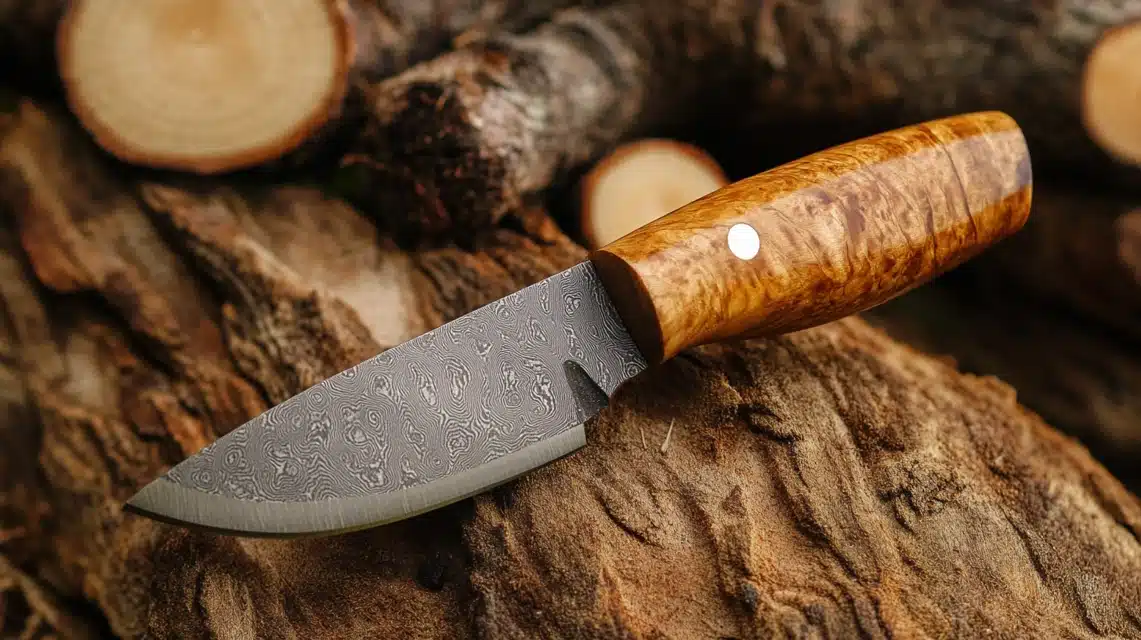
A sharp tool I use for precise marking on wood surfaces.
| Used For | Benefits | Sizes & Types |
|---|---|---|
| Marking cut lines | More precise than pencils | Single bevel |
| Scoring wood | Clear lines | Double bevel |
| Detail layout | Long-lasting marks | Straight blade |
| Joint marking | Better than pencils | Curved blade |
11. Combination square (Price Range – $15-$70)
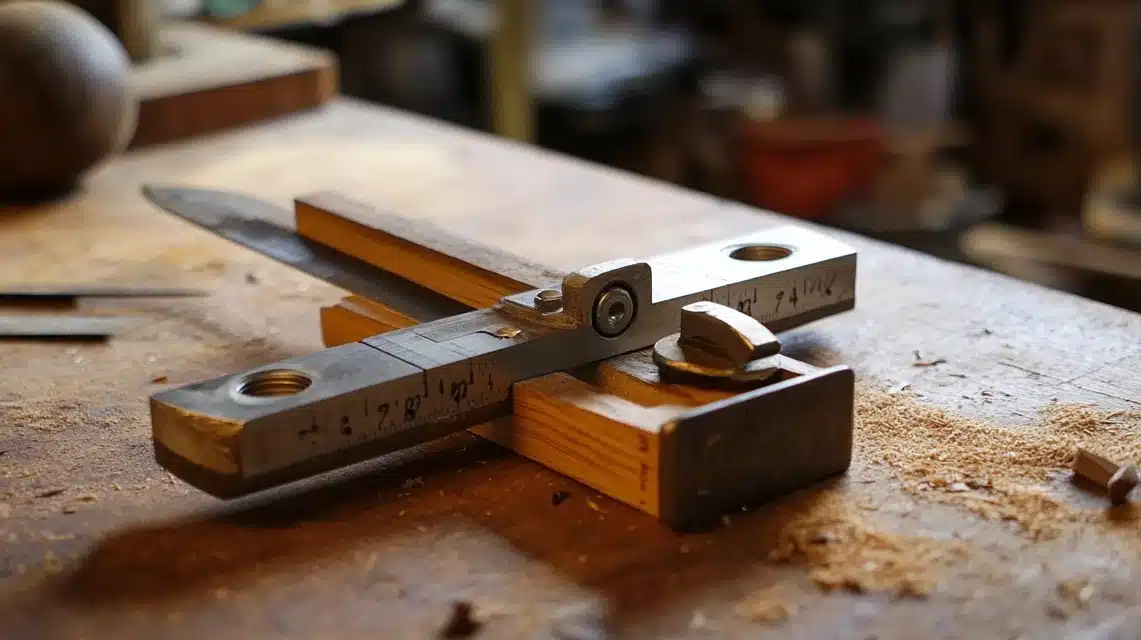
A measuring tool I use to check angles and mark lines.
| Used For | Benefits | Sizes & Types |
|---|---|---|
| Checking angles | Multiple functions | 6-inch |
| Marking lines | Accurate measurements | 12-inch |
| Measuring depth | Easy to use | With level |
| Setting tools | Portable | Without level |
12. Workbench vise (Price Range – $40-$200)
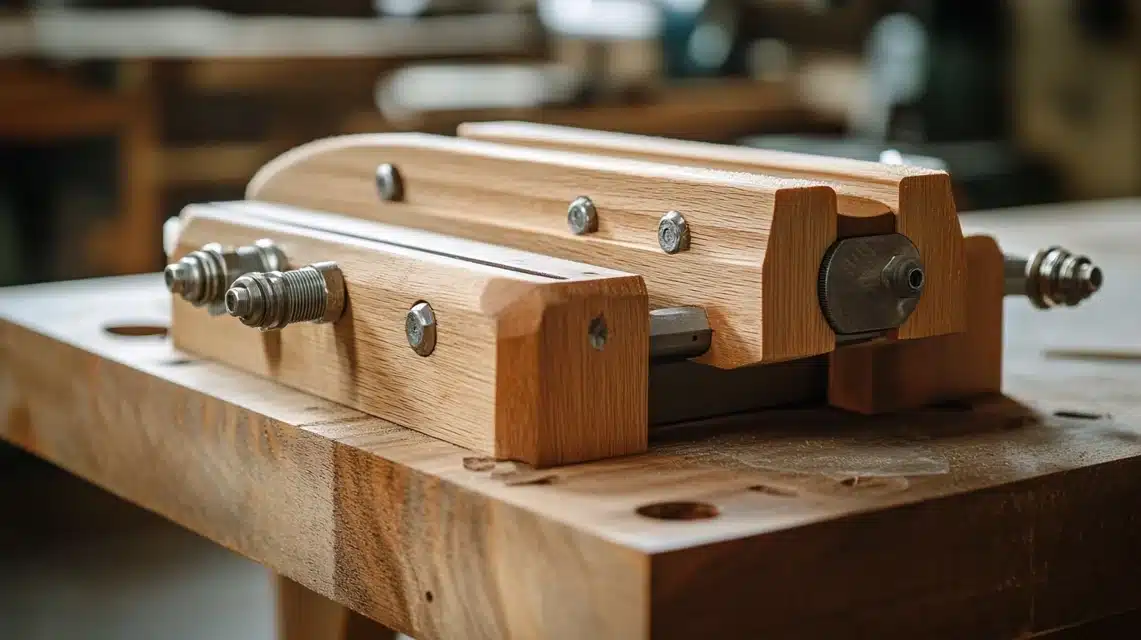
A holding tool I use to keep wood steady while working.
| Used For | Benefits | Sizes & Types |
|---|---|---|
| Holding wood | Strong grip | Front vise |
| Clamping pieces | Frees both hands | End vise |
| Assembly work | Steady support | Quick release |
| Planing wood | Easy to adjust | Traditional screw |
List of Must-Have Power Tools to Check Out
13. Power drill (Price Range – $50-$200)

My most-used power tool. Makes holes and drives screws quickly.
| Used For | Benefits | Sizes & Types |
|---|---|---|
| Drilling holes | Fast work | Corded |
| Driving screws | Different speeds | Cordless |
| Mixing materials | Many attachments | Hammer drill |
| Light sanding | Portable | Impact driver |
14. Circular saw (Price Range – $60-$200)
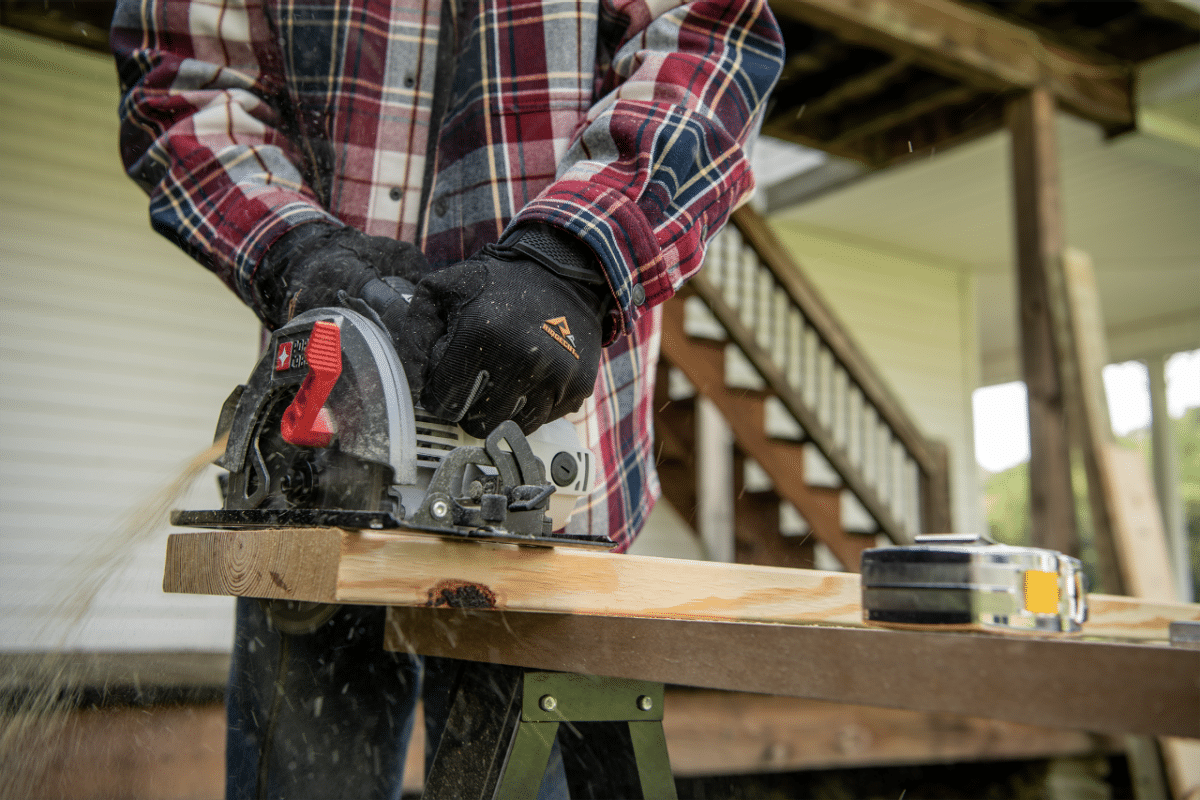
A handheld power saw I use for straight cuts in wood.
| Used For | Benefits | Sizes & Types |
|---|---|---|
| Long straight cuts | Fast cutting | 7¼ inch blade |
| Cross cuts | Straight lines | 6½ inch blade |
| Bevel cuts | Portable | Corded |
| Sheet goods | Adjustable depth | Cordless |
15. Table saw (Price Range – $300-$1000)

My main tool for accurate straight cuts and rip cuts.
| Used For | Benefits | Sizes & Types |
|---|---|---|
| Rip cuts | Accurate cuts | Contractor |
| Cross cuts | Repeatable cuts | Cabinet |
| Dado cuts | Large capacity | Hybrid |
| Bevel cuts | Strong motor | Portable |
16. Router (Price Range – $100-$300)

It is a versatile power tool I use for edges and decorative cuts.
| Used For | Benefits | Sizes & Types |
|---|---|---|
| Edge shaping | Clean cuts | Fixed base |
| Making grooves | Many bit options | Plunge base |
| Pattern work | Precise control | Trim router |
| Joint making | Smooth edges | Combo kits |
17. Random orbital sander (Price Range – $40-$150)
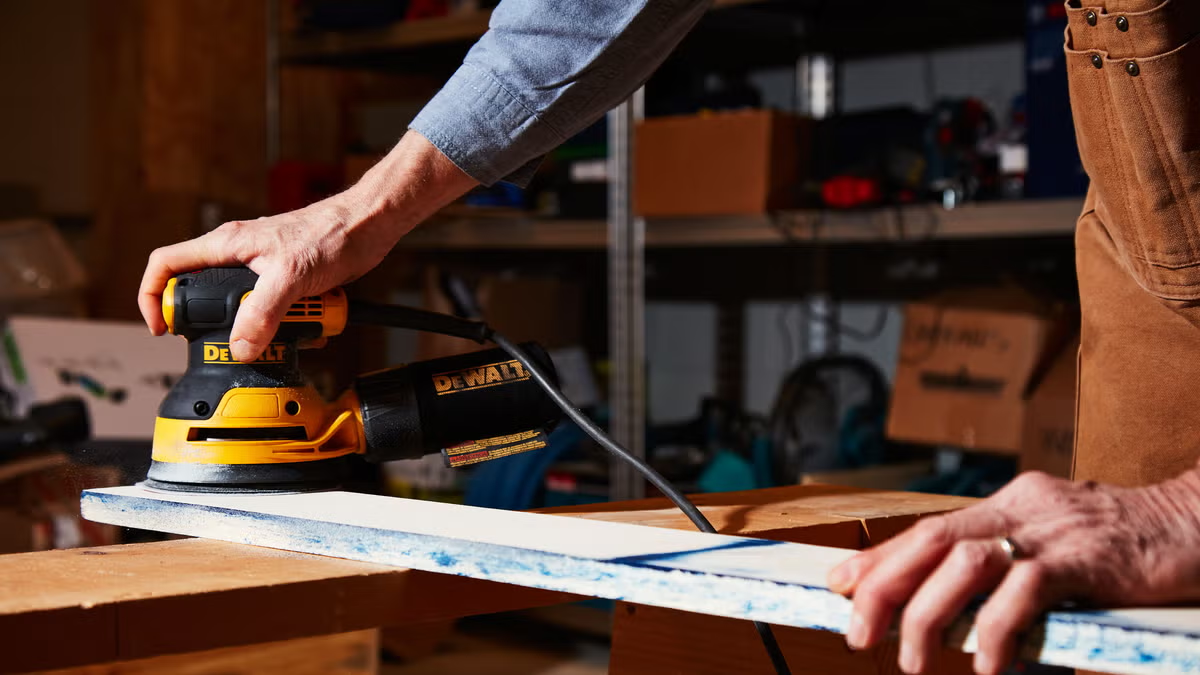
It is a power tool I rely on for smooth wood surfaces.
| Used For | Benefits | Sizes & Types |
|---|---|---|
| Surface sanding | No swirl marks | 5-inch pad |
| Paint removal | Fast sanding | 6-inch pad |
| Final smoothing | Easy to control | Corded |
| Edgework | Dust collection | Cordless |
18. Jigsaw (Price Range – $50-$200)
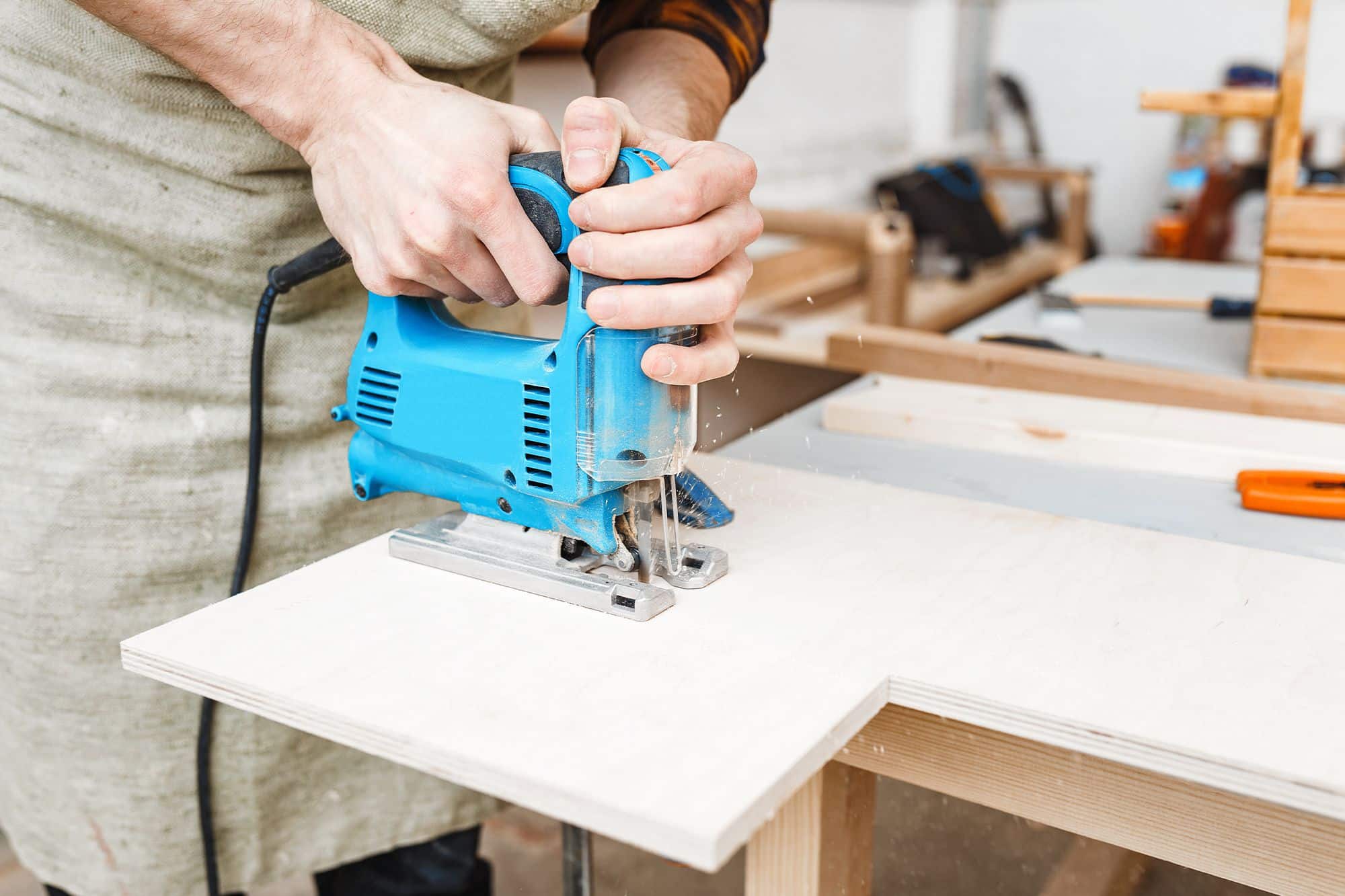
A handheld saw I use for curved cuts and shapes.
| Used For | Benefits | Sizes & Types |
|---|---|---|
| Curved cuts | Makes curved lines | Barrel grip |
| Interior cuts | Easy to handle | D-handle |
| Pattern cutting | Works in tight spots | Corded |
| Detail work | Many blade types | Cordless |
19. Miter saw (Price Range – $150-$500)
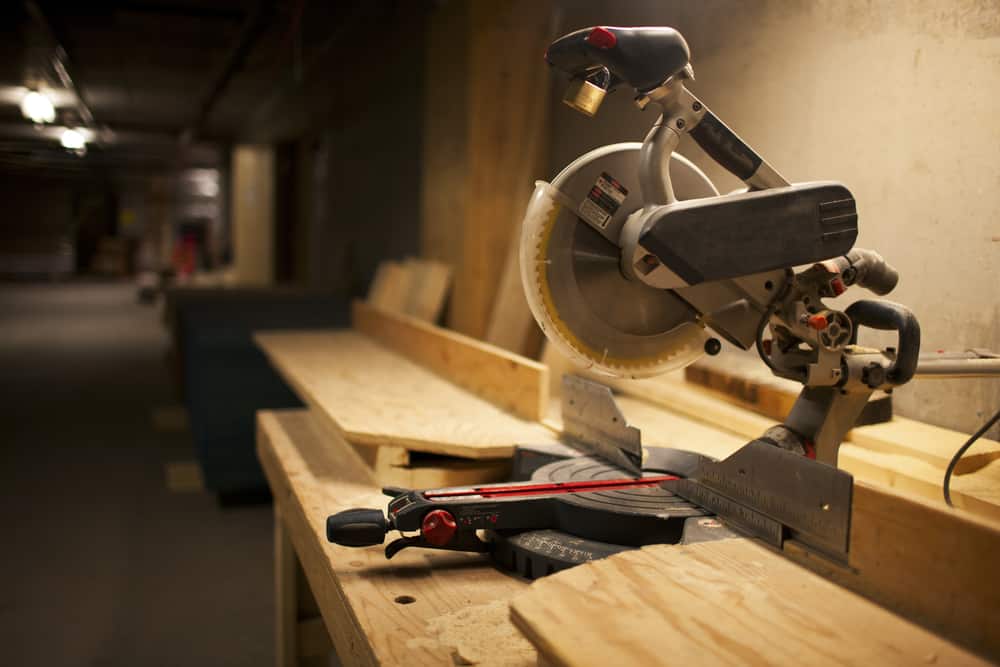
A fixed saw I use for accurate angle cuts.
| Used For | Benefits | Sizes & Types |
|---|---|---|
| Angle cuts | Quick setup | 10-inch blade |
| Cross-cuts | Clean cuts | 12-inch blade |
| Trim work | Exact angles | Single bevel |
| Picture frames | Safe operation | Double bevel |
20. Belt sander (Price Range – $50-$200)

A power tool I use for fast wood removal.
| Used For | Benefits | Sizes & Types |
|---|---|---|
| Heavy sanding | Fast work | 3×21 inch |
| Stock removal | Strong motor | 4×24 inch |
| Edge smoothing | Good for large areas | Handheld |
| Surface leveling | Even sanding | Bench mount |
21. Drill press (Price Range – $150-$500)
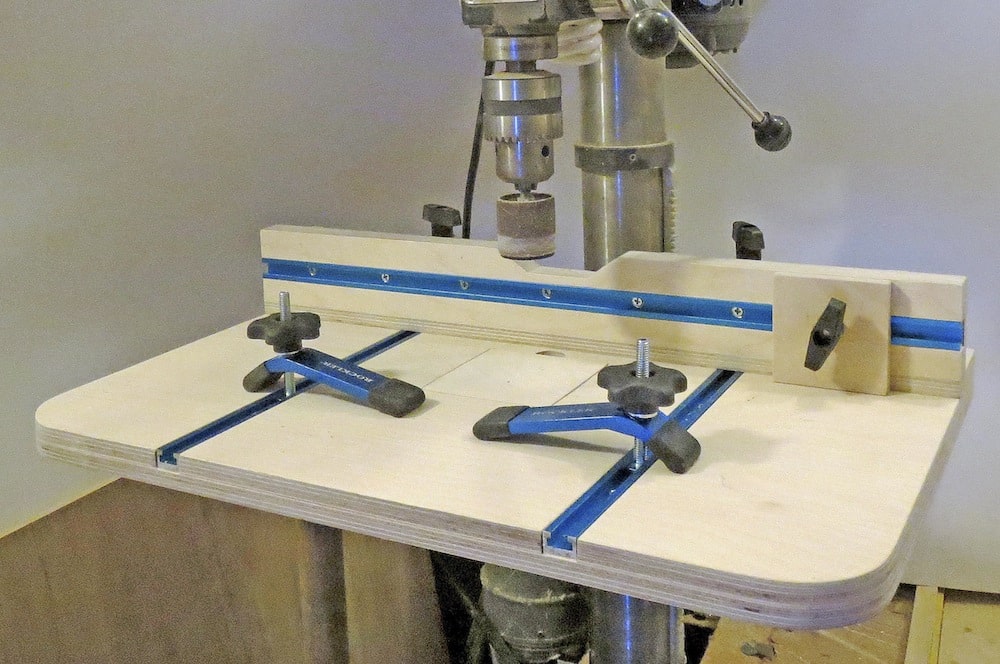
A fixed drilling machine I use for exact holes.
| Used For | Benefits | Sizes & Types |
|---|---|---|
| Precise holes | Perfect holes | Benchtop |
| Repetitive drilling | Same depth always | Floor model |
| Mortising | Strong power | 8-inch |
| Sanding | Many speeds | 12-inch |
22. Thickness planer (Price Range – $300-$800)

A machine I use to make boards flat and even.
| Used For | Benefits | Sizes & Types |
|---|---|---|
| Even thickness | Even boards | 12-inch |
| Surface smoothing | Saves time | 13-inch |
| Board flattening | Clean cuts | Benchtop |
| Stock prep | Both sides match | Industrial |
List of Must-Have Safety Tools to Check Out
23. Safety glasses (Price Range – $5-$30)
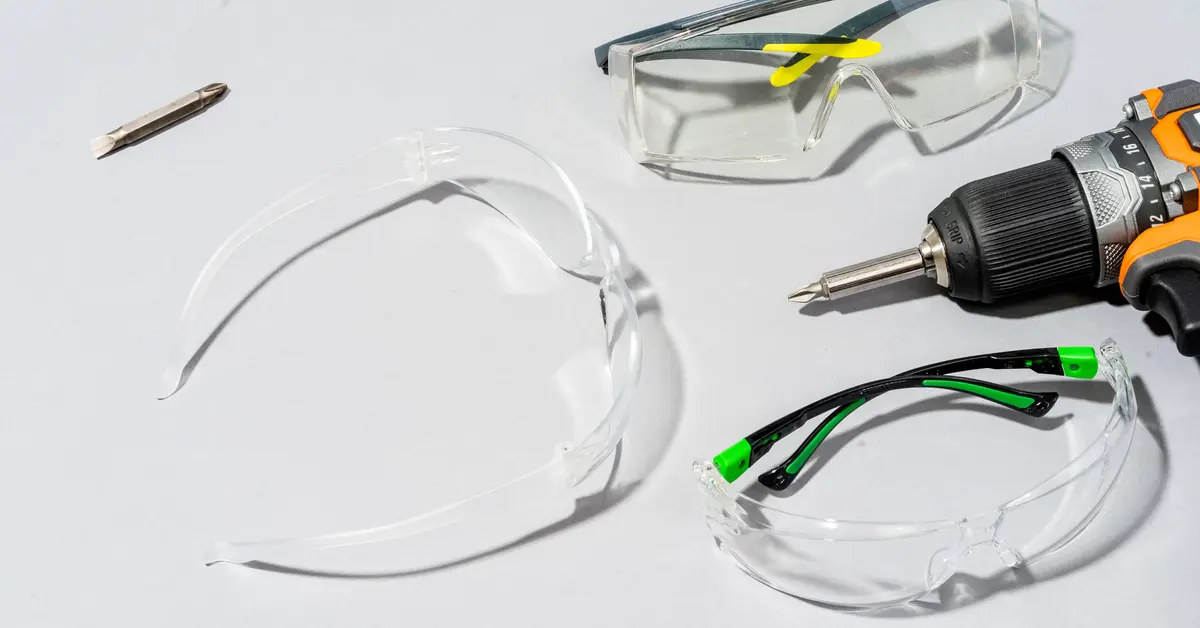
Eye protection I never work without.
| Used For | Benefits | Sizes & Types |
|---|---|---|
| Eye protection | Clear vision | Clear lens |
| Dust blocking | Eye safety | Tinted lens |
| Flying chips | Comfortable fit | Over-glasses |
| Daily work | Side protection | Anti-fog |
24. Hearing protection (Price Range – $15-$50)
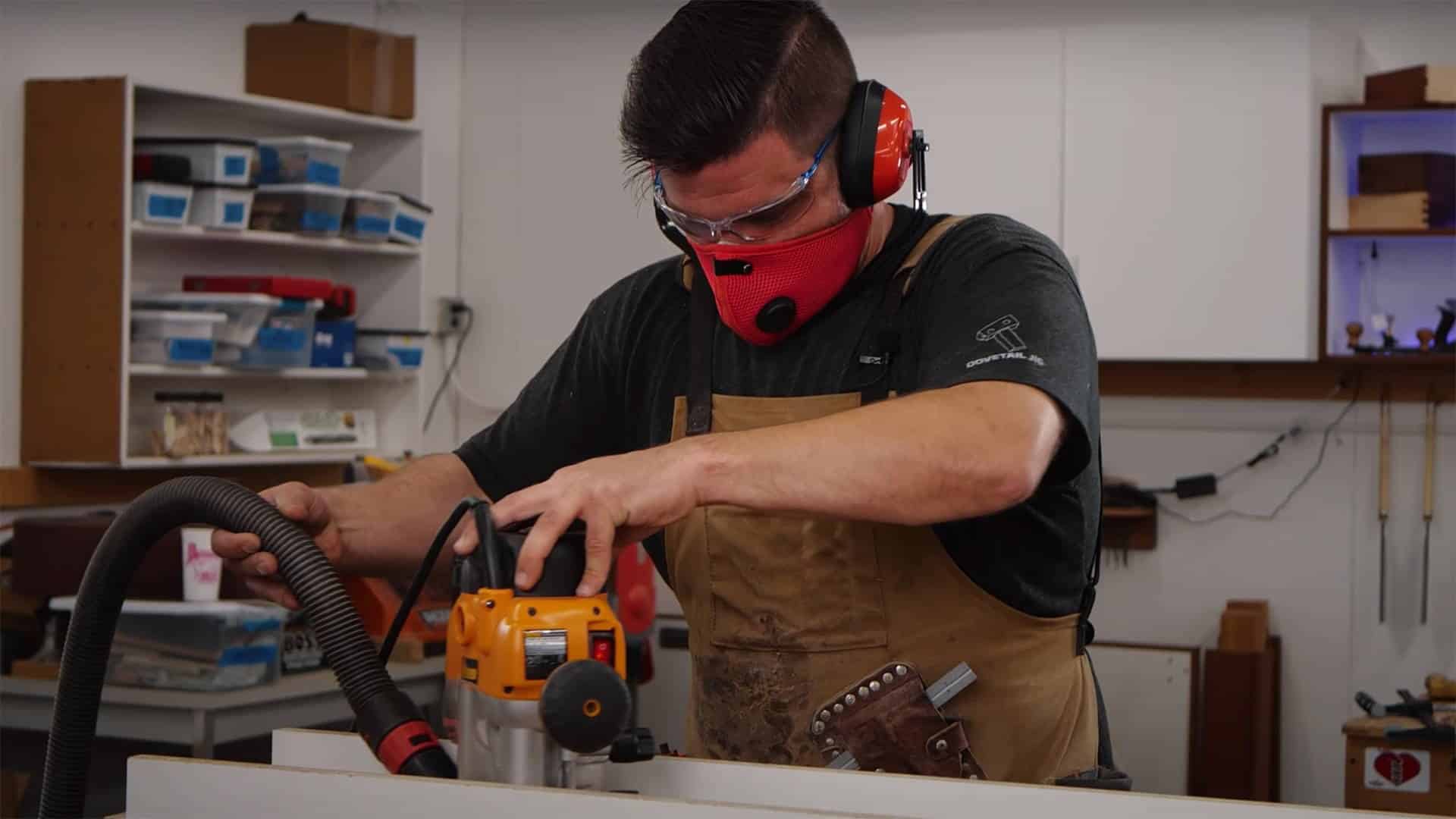
Ear guards, I use with loud tools.
| Used For | Benefits | Sizes & Types |
|---|---|---|
| Noise reduction | Ear safety | Ear muffs |
| Machine work | Comfort | Ear plugs |
| Power tool use | Good fit | Electronic |
| Shop safety | Long wear | Basic |
25. Dust mask (Price Range – $10-$40)

Face protection I use for clean air.
| Used For | Benefits | Sizes & Types |
|---|---|---|
| Dust protection | Clean air | Disposable |
| Sanding work | Easy breathing | Reusable |
| Fine particles | Good seal | N95 |
| Clean breathing | Comfortable | Half-face |
26. Work gloves (Price Range – $10-$40)
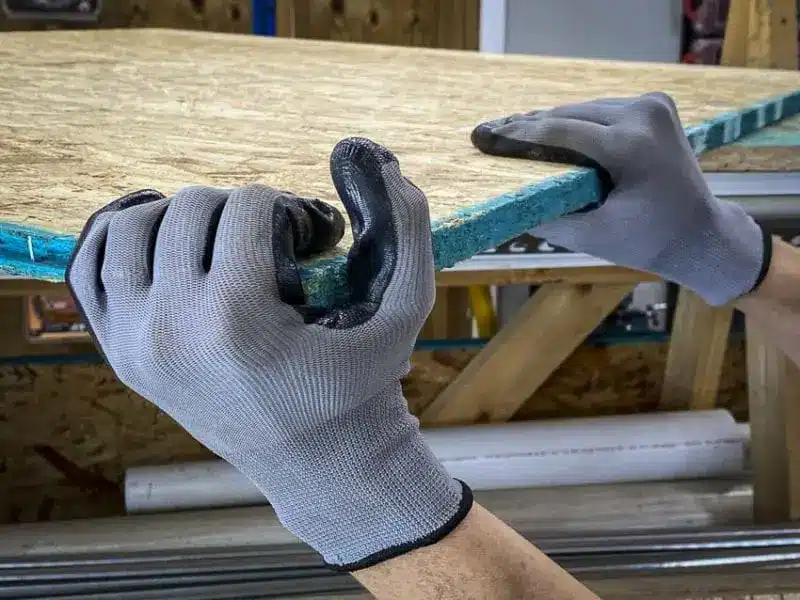
Hand protection I use for rough work.
| Used For | Benefits | Sizes & Types |
|---|---|---|
| Hand protection | Hand Safety | Leather |
| Rough materials | Good grip | Cotton |
| Sharp edges | Skin protection | Nitrile |
| Heavy lifting | Feel control | Fingerless |
List of Must-Have Clamping Tools to Check Out
27. C-clamps (Price Range – $8-$30)
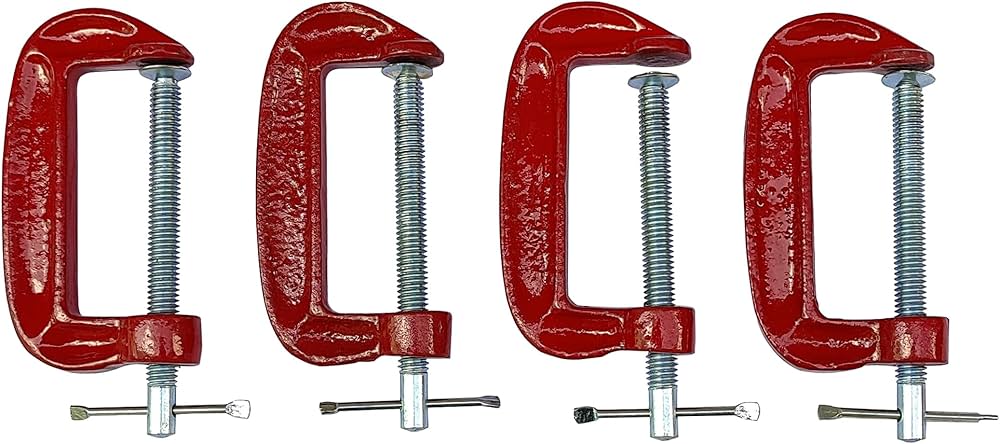
Strong holders, I use to keep wood in place.
| Used For | Benefits | Sizes & Types |
|---|---|---|
| Hold pieces | Strong grip | 2-inch |
| Glue ups | Easy to use | 4-inch |
| Edgework | Long-lasting | 6-inch |
| Assembly | Many sizes | 8-inch |
28. Bar clamps (Price Range – $15-$50)

I use long clamps for big projects.
| Used For | Benefits | Sizes & Types |
|---|---|---|
| Panel gluing | Long reach | 24-inch |
| Long pieces | Strong pressure | 36-inch |
| Wide boards | Easy-adjust | 48-inch |
| Assembly work | Even force | 60-inch |
29. Spring clamps (Price Range – $3-$15)
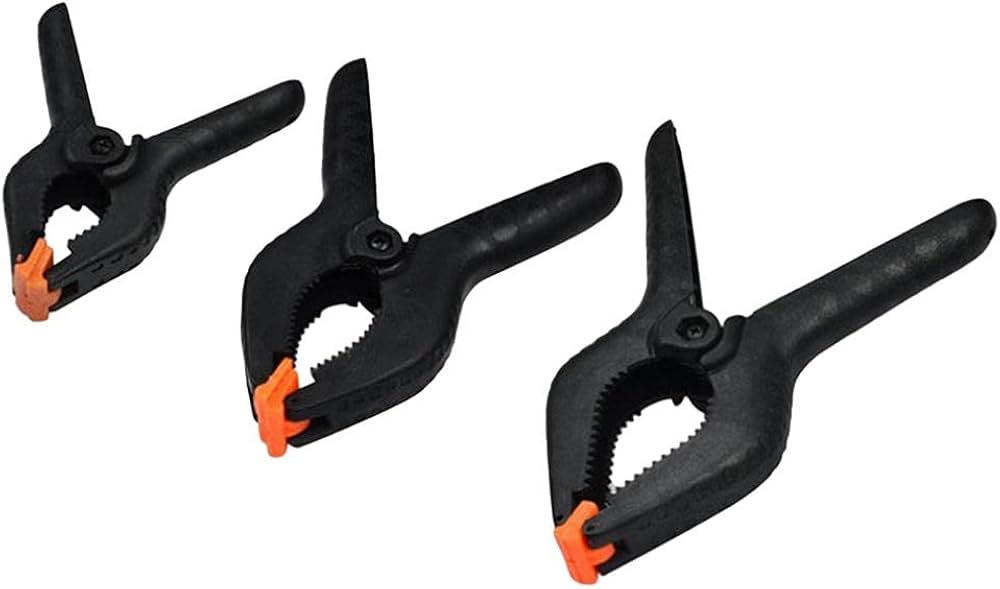
Quick clamps I use for light holding.
| Used For | Benefits | Sizes & Types |
|---|---|---|
| Quick holds | Fast use | 1-inch |
| Light pressure | One hand operation | 2-inch |
| Temporary fix | Lightweight | 3-inch |
| Small parts | Many uses | 4-inch |
List of Must-Have Finishing Tools to Check Out
30. Wood files (Price Range – $10-$40)
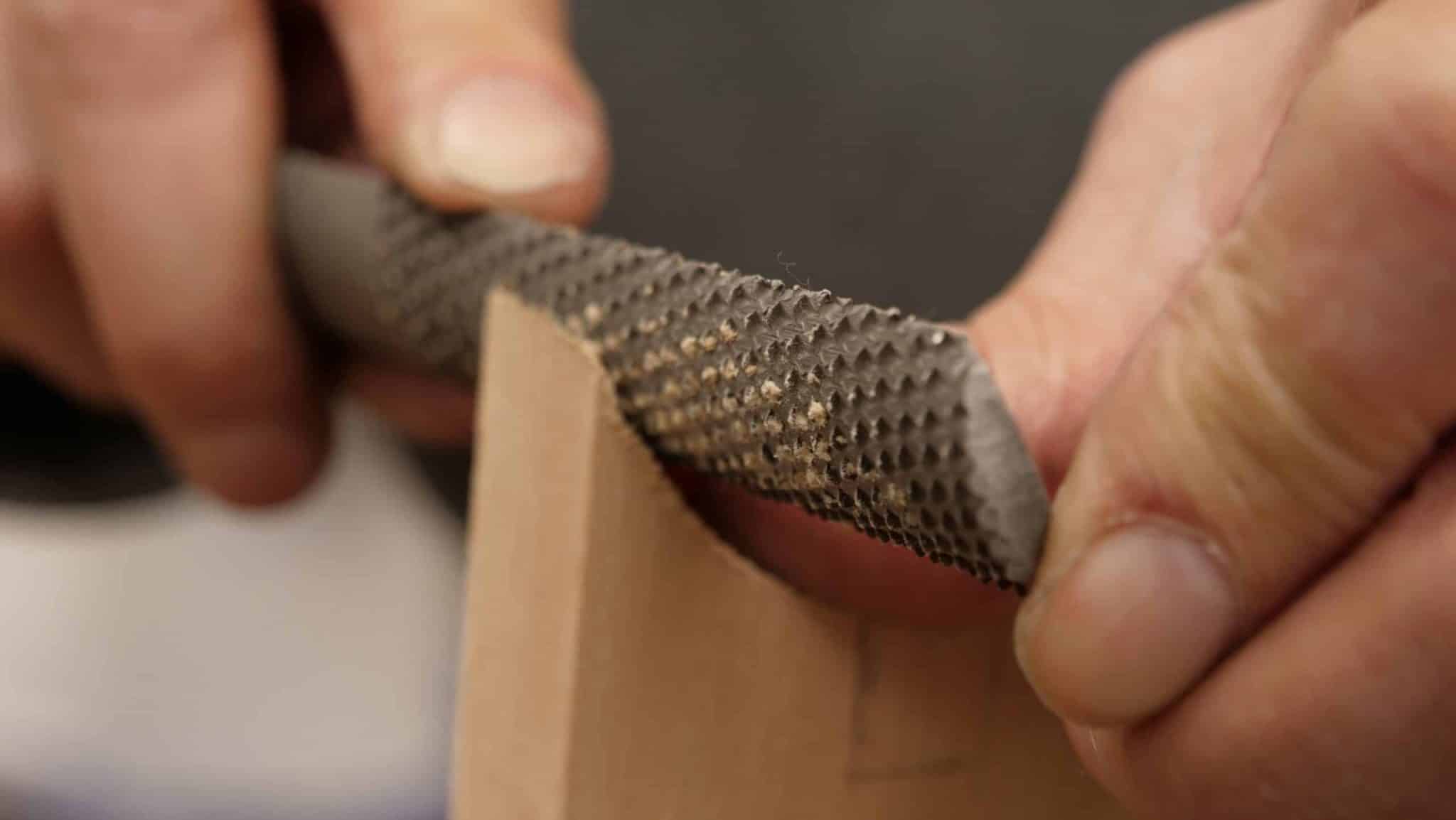
I use fine-shaping tools for detail work.
| Used For | Benefits | Sizes & Types |
|---|---|---|
| Fine shaping | Precise control | Flat |
| Edge smoothing | Smooth finish | Round |
| Detail work | Long-lasting | Half-round |
| Final touches | Many shapes | Needle files |
31. Sandpaper set (Price Range – $10-$30)
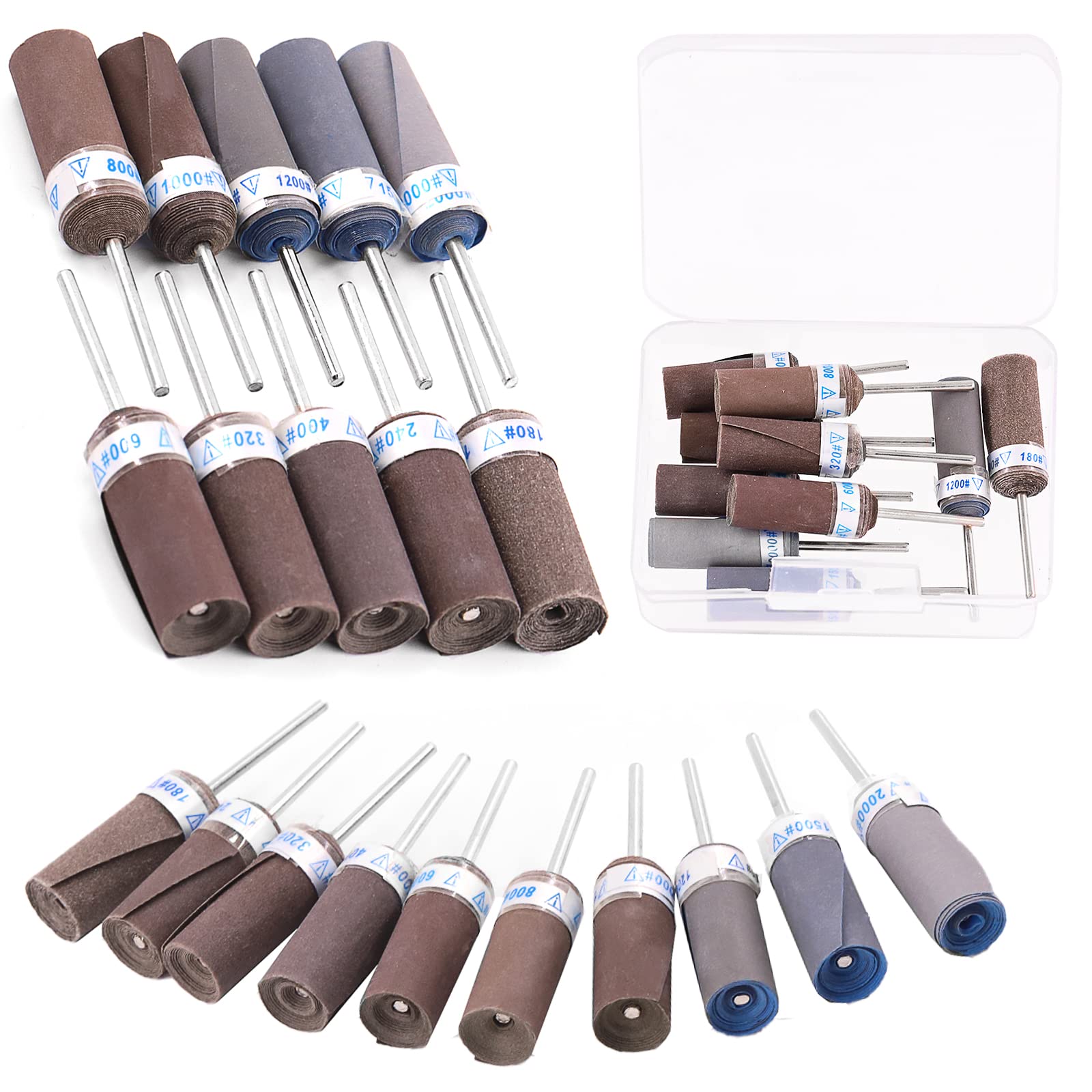
Abrasive sheets I use for smooth finishes.
| Used For | Benefits | Sizes & Types |
|---|---|---|
| Surface smoothing | Smooth finish | 60 to 220 grit |
| Final finish | Many grits | Wet/dry |
| Between coats | Easy to use | Sheets |
| Detail work | Fits all spots | Rolls |
How to Build Your Tool Collection Strategically
Starting Point
Basic Essentials I suggest starting with these must-have tools:
- Measuring tape
- Hand saw
- Claw hammer
- Basic screwdriver set
- Safety gear (glasses, gloves, dust mask) Cost: About $100-150
Level 1: Hand Tools Add these tools next:
- Chisels (basic set)
- Wood rasps
- Carpenter’s square
- Level
- Marking knife Cost: Additional $150-200
Level 2: First Power Tools When ready, invest in:
- Power drill
- Random orbital sander
- Jigsaw
- Basic clamps set Cost: Additional $200-300
Level 3: Major Tools As your skills grow, consider:
- Table saw
- Router
- Miter saw
- More clamps Cost: Additional $800-1200
Smart Buying Tips
- Quality Over Quantity
- Buy fewer but better tools
- Start with mid-range options
- Watch for sales at local stores
- Test Before Buying
- Try tools at workshops
- Borrow from friends
- Read user reviews
- Set Monthly Budget
- Save $50-100 Monthly
- Build your collection slowly
- Focus on the most-used items
- Tool Maintenance
- Clean after each use
- Store in a dry place
- Keep tools sharp
- Where to Buy
- Local hardware stores
- Online marketplaces
- Used tool shops
- Yard sales for basic items
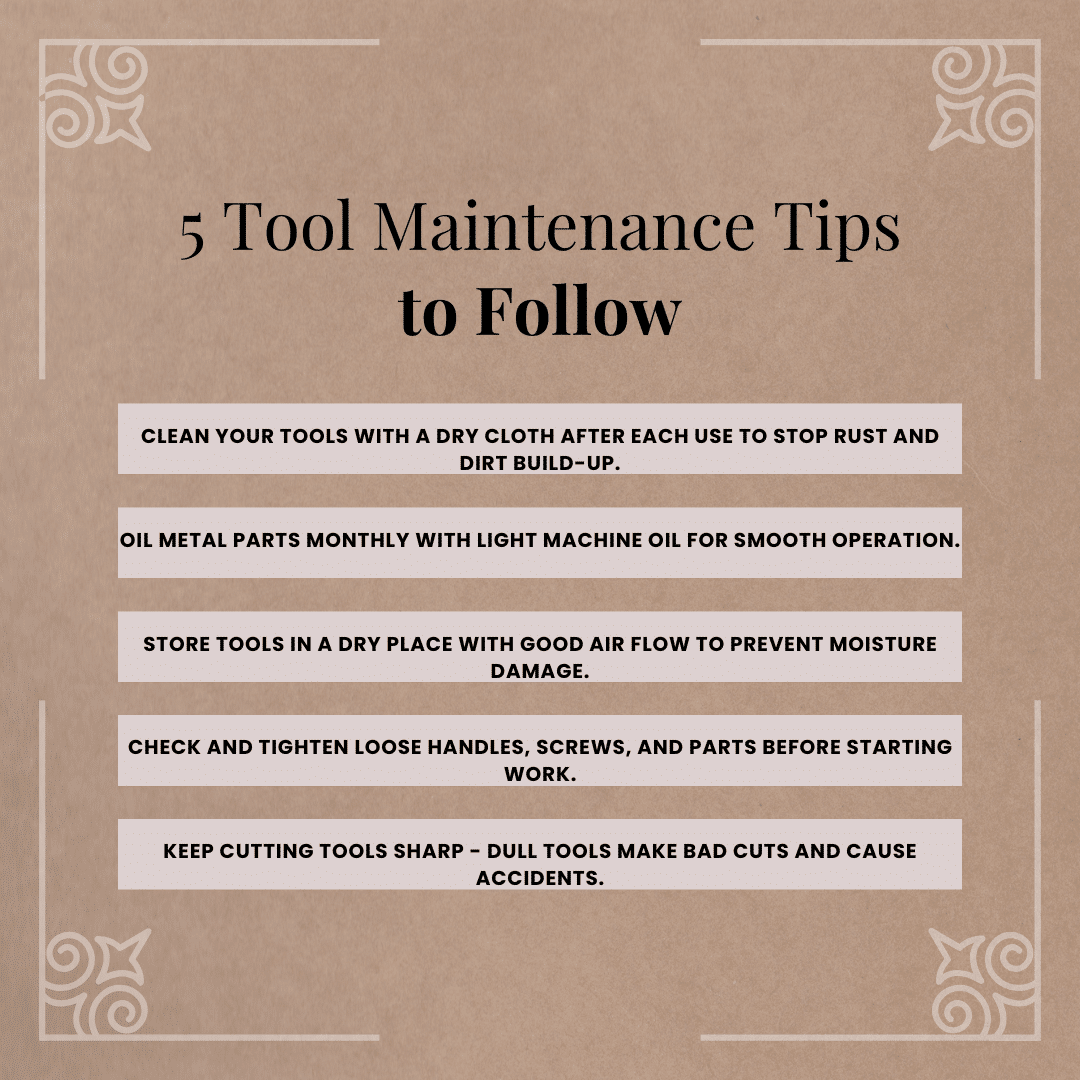
How to Start Woodworking on a Budget
Start Small, Start Smart
I began woodworking with just five basic tools and a small space. You don’t need everything at once – trust me on this one.
Essential Starting Tools (Under $200):
- Hand saw ($20)
- Hammer ($15)
- Measuring tape ($10)
- Screwdriver set ($25)
- Safety gear ($30)
- Basic sandpaper set ($10)
Money-Saving Tips:
1. Buy Used Tools
- Check local sales
- Look at flea markets
- Ask other woodworkers
2. Share Tools
- Join local clubs
- Work with friends
- Use community workshops
3. Smart Shopping
- Wait for sales
- Compare prices
- Buy combo kits
- Check returner items
4. Start with Pine
- Less costly wood
- Easy to work with
- Good for learning
- Readily available
5. Make Money While Learning
- Fix basic furniture
- Build simple items
- Sell small projects
- Take repair jobs
6. Free Learning Resources
- Watch online videos
- Read wood blogs
- Join online groups
- Visit local stores
Conclusion
Starting woodworking doesn’t need to be hard or costly. I’ve shared my favorite tools and tips from years of working with wood.
These 31 tools can help you create beautiful pieces while staying safe and having fun.
Remember, you don’t need everything right away. Start with basic hand tools, learn to use them well, and slowly build your collection.
Each tool has its special use, and your skills will grow as you add more to your workshop.
Ready to start? Pick up a few basic tools and try a simple project. If you found this guide helpful, subscribe to my newsletter for weekly woodworking tips and project ideas.
Let me know in the comments which tools you plan to buy first!
Frequently Asked Questions
What is the Most Used Tool in a Woodshop?
From my daily work, the power drill is the most used tool. It helps with holes, screws, and small fixes. Almost every project needs drilling or screwing.
Are Used Tools a Good Option for Beginners?
Yes, using tools can save you money when you start out. I suggest checking tools carefully before buying. Look for rust, damage, or worn parts. Test them if possible.







